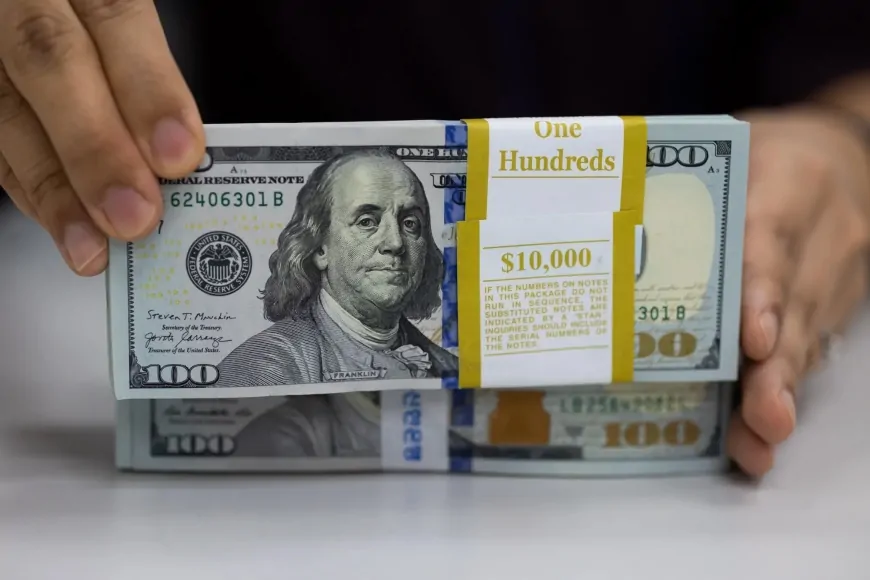US Dollar Drops 10% to 3-Year Low — Gold Surges, Export Economies Rally
The US dollar has dropped nearly 10% in 2025, lifting foreign currencies, export economies, and gold. Here’s how global markets are reacting.

The US dollar has fallen sharply this year, losing nearly 10% from its January peak and hitting a three-year low against a group of major world currencies. This drop isn’t just a market correction—it’s a direct response to the economic disruption caused by the White House’s aggressive tariff strategy. The policies have triggered fears of higher inflation and a potential economic slowdown, undermining investor confidence in the dollar’s stability.
The weaker greenback is already reshaping global financial flows, with ripple effects visible in currency markets, export-heavy economies, and commodity pricing. While American consumers face higher costs on imports and travel, several other players are cashing in.
Swiss Franc, Yen, and Euro Lead as Investors Exit the Dollar
Global investors have started pulling away from the dollar, rotating into currencies seen as more stable or better aligned with current macro trends. The Swiss franc has climbed over 9% against the dollar so far this year, maintaining its appeal as a financial safe zone amid political and economic instability. Japan’s yen has made similar gains, reflecting steady demand for Japanese assets as well as investor positioning in low-inflation markets.
Meanwhile, the euro is now trading at its highest point in three years against the dollar. The currency’s recent strength comes as European monetary policy signals greater confidence, while relative economic calm draws investors back into eurozone assets.
Even regional currencies in Asia are showing strength. The Singapore dollar and South Korean won have appreciated significantly, supported by trade surpluses and investor appetite for non-dollar denominated markets.
Export-Heavy Economies Like Japan, Germany, and Malaysia See Windfall
The dollar’s slide has given export-driven countries an edge, particularly those whose products are priced internationally in dollars. Japanese automakers, German machinery exporters, and Malaysian electronics firms are benefiting from improved pricing competitiveness, allowing them to undercut US rivals on cost.
This isn’t just theory—it’s already showing up in quarterly results and market activity. Export-oriented stock indices in these countries have outperformed broader markets, as investors anticipate stronger earnings from companies selling abroad.
The trend also plays into the hands of policymakers in these economies who have long faced pressure from relatively strong currencies. The weaker dollar gives them breathing room without having to intervene directly in currency markets.
Commodities Rally, but Oil Prices Lag Behind
The effect on commodities has been more complex. Gold, which often sees inflows during periods of dollar weakness, has jumped past $3,300 an ounce in 2025. It’s not just inflation hedging—gold is benefiting from capital shifting out of US equities and bonds into hard assets amid concerns about policy-driven instability.
Soybean prices are also on the rise, now trading around $10.40 per bushel. The combination of tighter global supply and lingering Chinese tariffs on US agricultural products has squeezed availability and pushed prices up—despite reduced US export volumes.
Oil hasn’t followed the same trajectory. Even with a weaker dollar, crude has pulled back from earlier gains due to worries that the ongoing trade conflict will undercut global growth and reduce fuel demand. For energy exporters, the weaker dollar offers limited consolation unless global consumption rebounds.
US Dollar Weakens Against Nearly Every Major Currency in 2025
The US dollar has continued to slide this year, with new figures showing just how widespread the decline has become. In a post shared on X, market strategist Charlie Bilello detailed how the greenback has lost ground against a broad range of global currencies.
So far in 2025, the dollar is down:
-
3% against the Australian, Canadian, and South Korean currencies
-
4% versus the Singapore dollar and Mexican peso
-
5% against the Brazilian real, British pound, and New Zealand dollar
-
7% versus the Norwegian krone
-
8% against the Polish zloty, Danish krone, and euro
-
9% versus the Hungarian forint, Japanese yen, and Swiss franc
-
11% against the Swedish krona
-
27% versus the Russian ruble
2025 Currency Returns: US Dollar vs...
Australian Dollar: -3%
Canadian Dollar: -3%
South Korean Won: -3%
Singapore Dollar: -4%
Mexican Peso: -4%
Brazilian Real: -5%
British Pound: -5%
New Zealand Dollar: -5%
Norwegian Krone: -7%
Polish Zloty: -8%
Danish Krone: -8%
Euro: -8%… — Charlie Bilello (@charliebilello) April 17, 2025
De-Dollarization Efforts May Accelerate
Beyond short-term trading impacts, the dollar’s fall is giving more momentum to long-term efforts by several countries to reduce reliance on the US currency in global trade. Brazil, India, China, Russia, and South Africa have been working on currency swap arrangements and alternative payment systems that could gradually shift international transactions away from the dollar.
The recent slide has only reinforced their arguments, especially as dollar volatility makes trade settlements riskier. For countries managing large reserves or dealing in dollar-priced commodities, the incentive to diversify is growing stronger.
Also Read: Trump Says Fed Chair Powell Should Be Fired, Demands Immediate Rate Cuts
































































